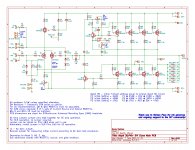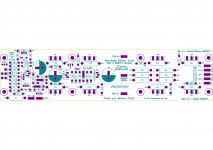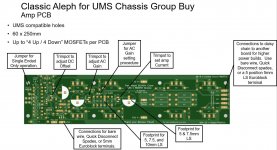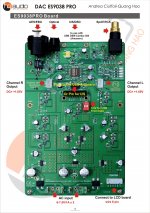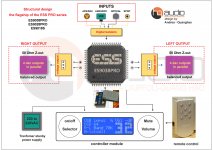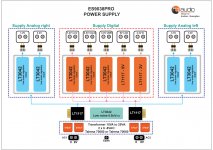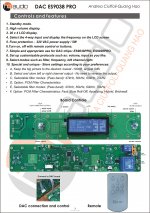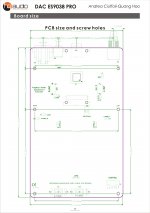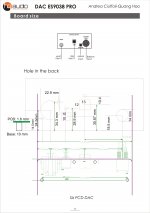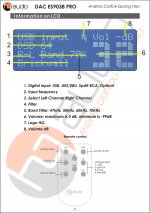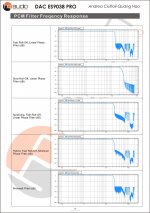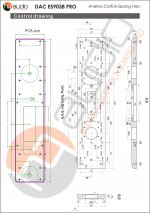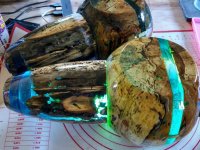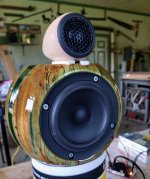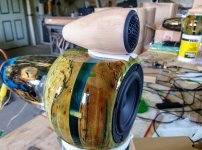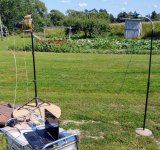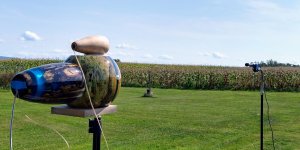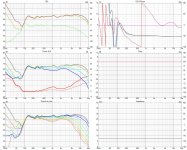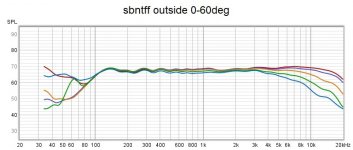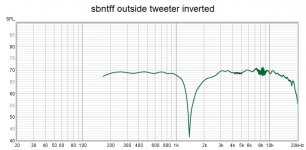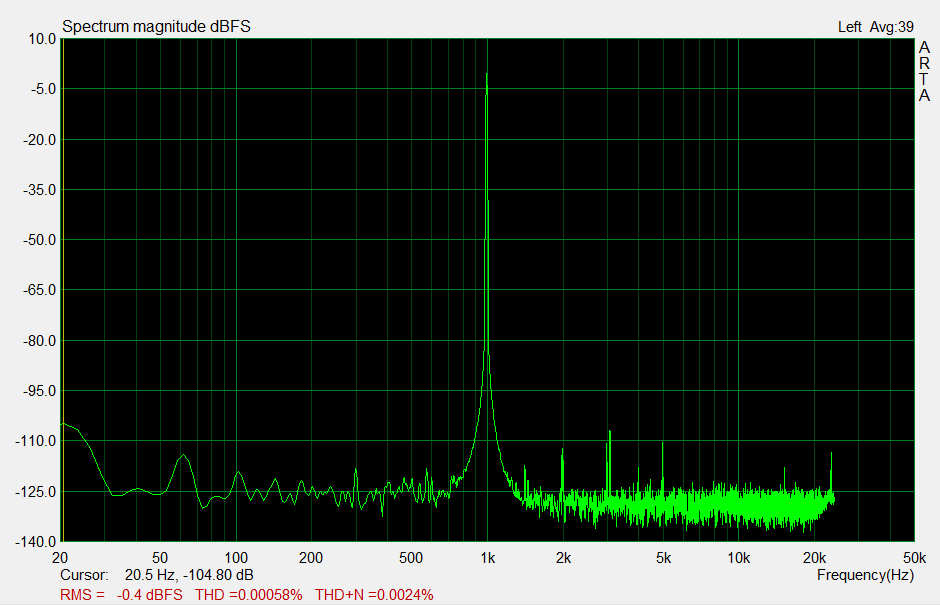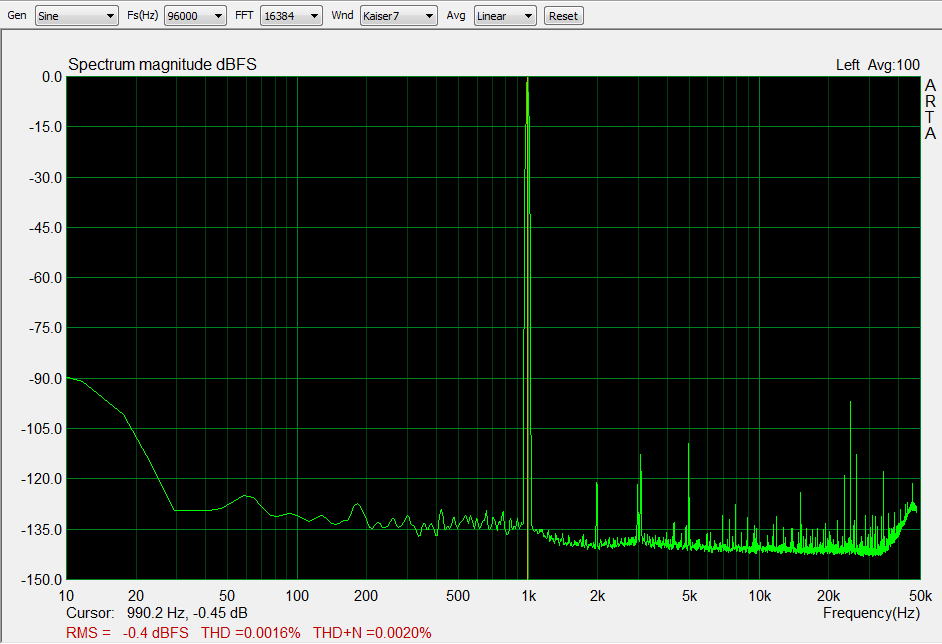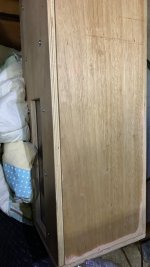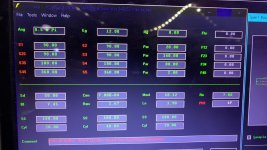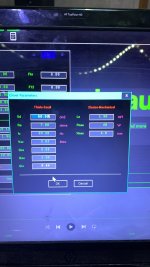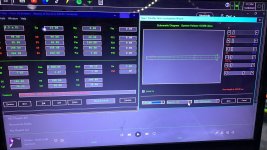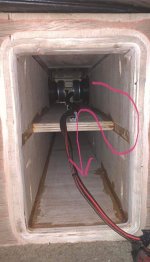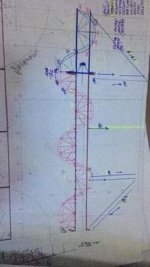Purifi's PTT6.5W04-01A woofer group buy
You are invited to join a North American group buy of the Purifi’s groundbreaking long-stroke ultra-low-distortion PTT6.5W04-01A woofer, and optionally the matching PTT6.5PR-01A Passive Radiator. Owing to Purifi’s policy requiring orders go to a single address this gets complex, thus the long post.
Announcing the Purifi group buy will close January 31, 2020. At that point we will aggregate our funds and place the order with Purifi. Logistics require we place a single order so we will not be able to accommodate stragglers after the cutoff on the 31st. Sorry about that, I am a procrastinator myself but in this case we are early adopters and a decision is required.
Many of us have taken note of Purifi (
Purifi Audio), a new research focused company in Denmark founded and staffed by a distinguished group of Hi-Fi industry heavyweights. The team at Purifi (for the roster see
About - PURIFI) has extensive experience in the electronics, loudspeaker, and business sides of Hi-Fi. A following post to this thread will include links to both Purifi’s technology white papers and independent testing and listening reviews.
On the loudspeaker side Purifi’s initial offering is the PTT6.5W04-01A 6.5 inch woofer, a design that reduces distortion by tens of dBs while remaining linear to extreme excursion levels. This promises to allow bass depth with low midrange distortion that is normally the providence of large speakers using 12 and 15 inch woofers in jumbo multi-cubic foot boxes to be had from a ½ cubic foot / 15 liter enclosure 2-way system.
Purifi’s PTT6.5W04-01A is manufactured in Denmark. That is a good news bad news situation. Good news is for decades Denmark and Scandinavia have been a primary source of state of the art loudspeaker drivers and with European manufacturing by this team quality is a given. The downside is price, it does cost to manufacture in Europe, in this case $250 to $350 per driver depending on where one falls on the price breaks. So let us band together and save some dollars.
Purifi conducts all of their business in Danish krone, 1 Danish Krone equaling approximately 0.15 United States Dollar. As of this posting date cost in Danish krone and US dollars are as follows. These prices do not include shipping.
PTT6.5W04-01A Woofer Quantity based pricing table
Min__Max__Unit Price DKK__Unit Price USD
1____3_____2,329.00______$349.35
4____5_____2,108.00______$316.20
6____7_____1,871.00______$280.65
8____8+____1,663.00______$249.45
PTT6.5PR-01A Passive Radiator Quantity based pricing table
Min__Max__Unit Price DKK__Unit Price USD
1____3_____844.00________$126.60
4____5_____761.00________$114.15
6____7_____672.00________$100.80
8____8+____593.00________$88.95
Obviously if four or more of us commit to a pair of woofers each we can access the 8 pieces and above price break saving $150 to $200US on a pair. The exact savings depending on shipping costs, which I intend to pass on at cost. There will be no markup on this effort, I am donating my time to encourage fellow early adopters. That time will primarily be breaking the big shipment from Denmark into individual pairs, re-packing, and shipping onto the group members. Alas, to access the 8 and above price the shipment must be to a single address so a second shipment within N. America is required. I do have a commercial shipping address, which gets us a discount from Purifi’s shipping service DHL and avoids porch pirate worries.
Thanks to Purifi’s web store we can see exact cost to land a group buy to USA. The following tables show those costs as of January 2020 with shipping to Oklahoma. The first table for a group order for four of us to get one pair of PTT6.5W04-01A woofers each, eight drivers total. The second table shows the cost to buy a single pair of drivers as a comparison.
PTT6.5W04-01A Web Costing Group Buy
Item_____Quantity___Unit Price DKK__Unit Price USD___Order Price DKK__Order Price USD
PTT6.5-04___8_______1,663.00_______$249.45_________13,304.00______$1,995.60
Shipping____1_______1,312.00_______$196.80__________1,312.00_______$196.80
__________________________________totals__________14,616.00______$2,192.40
Unit cost group buy landed in USA $274.05
Pair cost group buy landed in USA $548.10
PTT6.5W04-01A Web Costing Individual Buy
Item_____Quantity___Unit Price DKK__Unit Price USD___Order Price DKK__Order Price USD
PTT6.5-04__2________2,329.00_______$349.35_________4,658.00________$698.70
Shipping___1__________622.00________$93.30__________622.00_________$93.30
_____________________________________totals_______5,280.00_________$792.00
Unit cost individual’s buy landed in USA $396.00
Pair cost individual’s buy landed in USA $792.00
Bottom line is buying individually a pair cost $792 vs. as a group $548 + Oklahoma to you shipping.
If you want to join this group buy reply to this thread and send me a personal message with contact info. I plan the process to proceed as follows:
1. Recruit enough participants to qualify for quantity 8+ pricing.
2. Close participation in initial group buy.
3. Check costs to buy woofers (and passive radiators if anyone orders those) and shipping costs Denmark to Oklahoma, communicate each individual’s total to participants.
4. Participants pay using PayPal to group buy organizer. Your PayPal receipt will state “Expected delivery time 6 – 8 weeks”, I will try to beat that, most of that will be determined by Purifi’s build time and shipping including clearing USA customs.
5. When all funds arrive order is placed with Purifi. Be aware Purifi states “Note that this product is made-to-order. Expect approximately 4 weeks delivery time.”
6. While Purifi builds and ship woofers group organizer will prepare boxes and packing for shipping leg within North America.
7. When shipment arrives in Oklahoma group organizer will break down into shipments to individual participants, determine cost, and communicate to each participant their North American final leg shipping cost.
8. After participant pays their individual within N. America cost group organizer ships their order.
9. Woofers arrive individual participants’ workshops where they are installed in boxes. Jaws drop, sonic bliss ensues.
Obviously at this level of cost to entry we have a classic case of it is expensive to participate at the cutting edge of technology. I expect the cost to entry will surface individuals with the commitment and means to participate. Given that one should not need to say, yet out of an abundance of caution I will;
do not be a wimp! Once you commit do not try and back out! This is not Amazon with free returns, you buy via this group buy and they are yours. If ultimately the sound is not to your liking it is on you to store, scrap, or sell them on. I do not intend to allow that reality to give Purifi a pass on their quality obligation to deliver product as specified to us. What I will not allow is audiophile wimp buyer’s remorse with excuses like “I don’t like how it looks”, “I’ve decided to go a different route and want a refund to help fund that project”, or “upon audition they lack a certain air and “je ne sais quoi” my incredibly refined hearing cannot do without”.
I am excited the Purifi PTT6.5W04-01A is a true breakthrough, something rare in such a mature century old technology. I hope you will join me as one of the first to explore it.
